Canada often gets passed over while discussing dream travel. Blame its twin reputations for politeness and poutine. But America’s neighbor to the north is vast—the second-largest country in the world by geography—and plenty spectacular from coast to coast. Contained within those 3,855,103 square miles is the potential for one of the most scenic, spectacular, and adventurous trips of your life.
Related: 50 Best Vacations in the U.S.—Ranked by Travel Experts
The trick is knowing where to start. From emerging foodie hubs to both well-known and off-the-radar natural wonders, and multicultural getaways, there’s plenty to choose from in a friendly nation this enormous and varied. Here are 10 of our favorite cities to help get you started while planning your next unforgettable Canadian vacation.
Best for City Parks: Vancouver
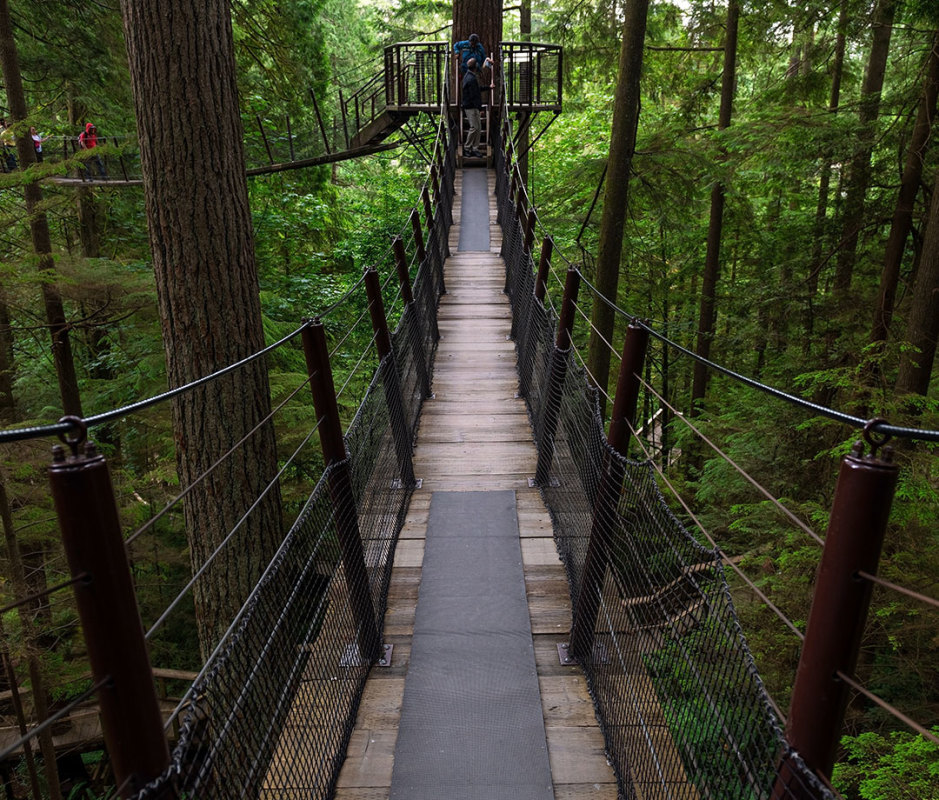
SL Photography/Getty Images
Don’t overlook Vancouver just because it’s a stone’s throw away from the U.S. border. The British Columbia port city beautifully integrates nature and city. Start by walking through Stanley Park, either alone or with an indigenous guide from Talking Trees, who can help you unpack First Nations’ relationship to the land. The park also contains beaches, an aquarium, playgrounds, a pool and splash park, botanical gardens, a golf course, and 17 tennis courts—so you could easily spend a full day exploring and not get through all of it. Or head to Capilano Suspension Bridge Park in North Vancouver, one of BC's top attractions, featuring a towering suspension bridge across a lush rainforest canopy and adventure tours through the area's dramatic canyons and greenery.
For nature of the more manicured variety, stop by VanDusen Garden's Elizabethan Hedge Maze, one of only six in North America. Or dial up the adventure at nearby Grouse Mountain, a natural playground offering hiking, ziplining, and gondola rides to stunning views of the city. With all that nearby ocean next door, you can see some of the world’s largest cetaceans with Vancouver Whale Watch, claiming a 98% sighting success rate. Be sure to capture a snap of the weirdest beast of all here, Digital Orca, a Lego-like sculpture by Gen X writer Douglas Coupland, located alongside Vancouver Convention Centre. Finish off your time getting up close and personal with nature at Salmon n' Bannock, an indigenous restaurant noted for using all local ingredients.
Where to Stay: The Fairmont Pacific Rim
The Fairmont Pacific Rim is a notable gathering spot for celebrities, scenesters, and those in the know, including Drake—who famously wanted a pre-show Bellini from its in-house Cactus Club.
Best for Maritime Culture: Charlottetown
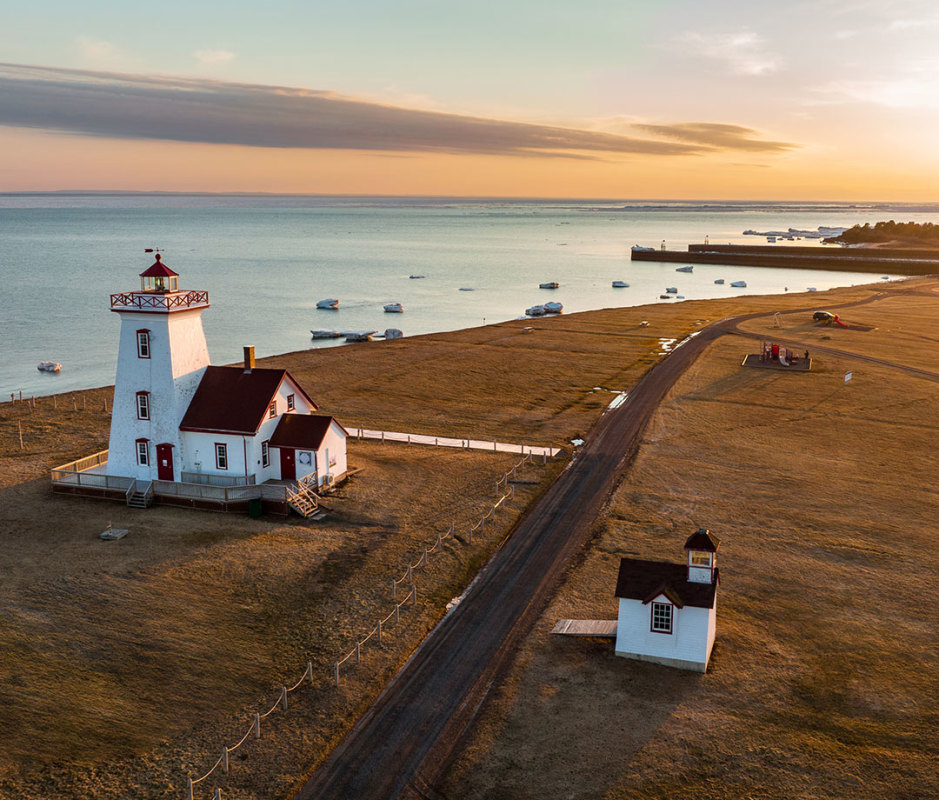
onukurtic/Getty Images
Prince Edward Island might have gained international notoriety thanks to Anne of Green Gables. But the real-life Maritime province has plenty to explore beyond one of fiction’s most beloved orphans. Start at the capital, Charlottetown (pop. 36,094), a southern coast gateway to the rest of Canada’s small but seductive island province. The charming city is a perfect weekend retreat surrounded by hiking trails—ranging from the two-mile Beach Grove Loop to the more ambitious Confederation Trail, a rugged, 22-mile trek leading from Charlottetown to Mount Stewart. Cool off with a beach day at Tea Hill Provincial Park—a 15-minute drive away featuring a stunning, uncrowded shore featuring PEI's signature red sand. Or play a relaxed round at Fox Meadow Golf Course. Amateur ornithologists will discover their new favorite place to spot blue jays, the province’s official bird.
Where to Stay: Shipwright Inn
Prince Edward Island is known for its hospitality and charm. Embrace both at Shipwright Inn, a Victorian home (built in 1865) turned bed and breakfast.
Best for Live Music and Street Art: Montreal
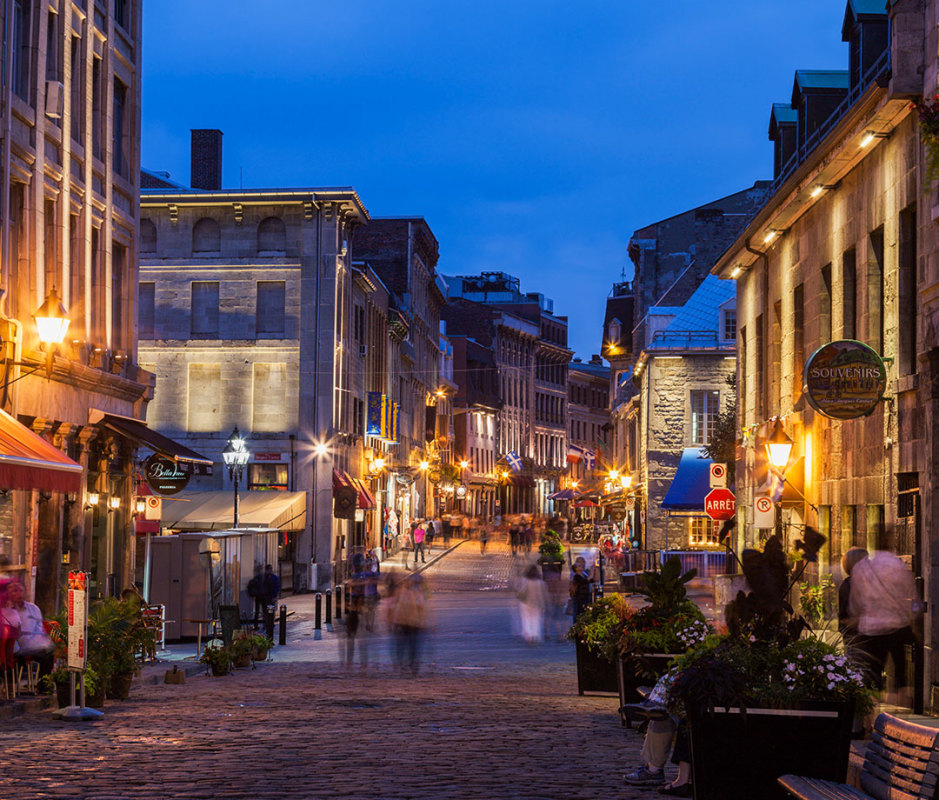
Henryk Sadura/Getty Images
Montreal feels like a tiny slice of Europe—one located only an hour and a half from New York City. It isn’t just the place where some of your favorite bands have thrived—though with world-class events like Pop Montreal, Osheaga, and M for Montreal, there’s plenty of opportunity to see live music. Montreal is a spot where creativity of all sorts is allowed to take root. Grab a coffee at Cafe Olimpico, wander the streets, and absorb this city's vibrant artistic energy at every turn. Since 2012, the Plateau neighborhood just off Boulevard Saint-Laurent has hosted Mural, a festival where street artists from across the world create original, wall-size art, making it a prismatic quarter where you can spot larger-than-life portraits of Jackie Robinson and local hero Leonard Cohen.
In addition to being incredibly walkable, Montreal is also a biker’s paradise—even for beginners. Rent a bike from Montreal on Wheels and work up an appetite on the streets, or hit the hiking trails at Mount Royal Park before visiting Schwartz’s Deli, a Jewish Quarter staple that has been serving up structurally oversized sandwiches and plates of fries plucked right out of the oil for more than 90 years. For an oversized dish of the region’s signature poutine (fries and cheese curds smothered in brown gravy) head to L’Gros Luxe in Mile End. Finish off with a nightcap at The Cold Room. The signature-of-signature cocktails is the “Montreal,” featuring London Dry Gin, Canadian rye whiskey, Aperol, and Suze in equal parts—creating a strong, floral-leaning tribute to Montreal's British, Canadian, French, and Italian heritage.
Where to Stay: Le Germain Hotel
Le Germain Hotel’s sleek rooms feature retro fabrics and swinging chairs evoking the glamor of the 1967 International and Universal Exposition. Hit the shower and freshen up with woodsy soaps and shampoos featuring a fragrance created by Canadian model Ruby Brown. The downtown location can’t be beat, but if you’re not in the mood to leave the building, you can always enjoy dinner at the French-inspired in-house restaurant, Le Boulevardier.
Best for Remote Adventure: Yellowknife
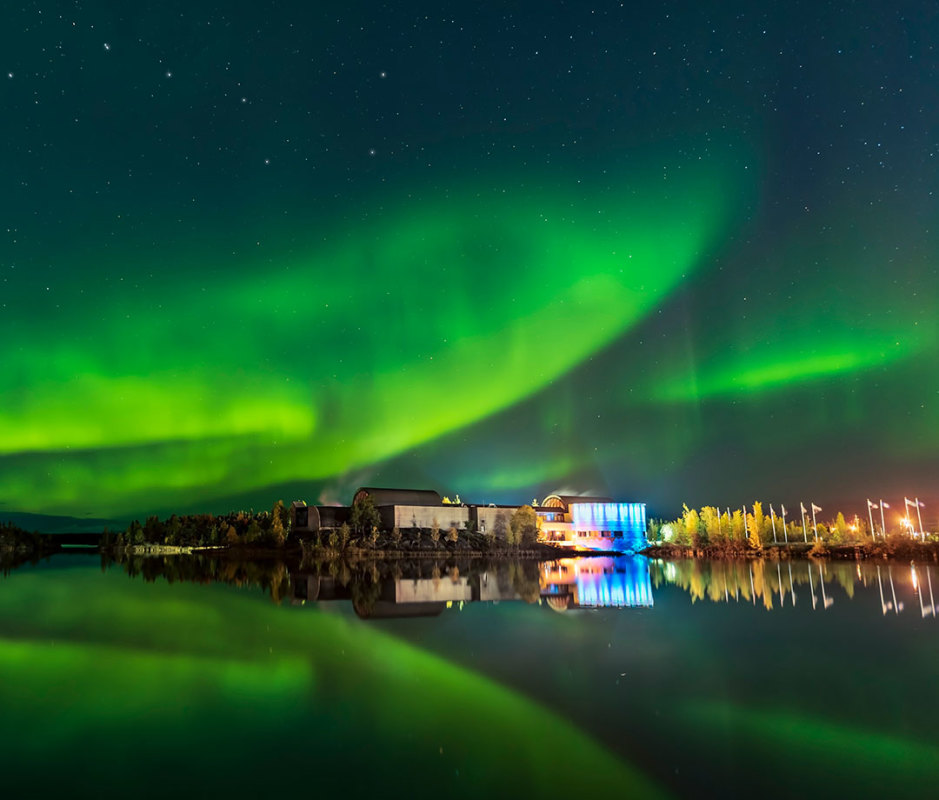
Alan Dyer Stocktrek Images/Getty Images
The remote capital of Canada’s Northwestern Territories is one of the best places in the world to see the northern lights, with a viewing season that stretches from late August to April. Exploring the city on foot, art lovers will particularly enjoy the Northern Arts & Cultural Centre and Old Town Glassworks' Workshop, where you can create a masterpiece of your own. The real attraction here is the area’s untamed nature. Visit in the winter, where in addition to the waves of aurora borealis you can try snowshoeing, cross-country skiing, or dog sledding with a team of ready-to-run canines. Or visit in the summer, to hike the two-mile out-and-back Cameron Falls Trail loop, or fish on Great Slave Lake. Just make sure you get a permit first. Outdoor adventure days are all best finished at Wildcat Café, voted by Yellowknifers as having the world's best burgers.
Where to Stay: The Explorer Hotel
Since nature is the centerpiece of any trip to Yellowkinfe, keep it simple with a stay at The Explorer Hotel. The centrally located lodging keeps you close to all the outdoor action and provides ample assistance booking a slate of adventures.
Best for Western Culture: Calgary
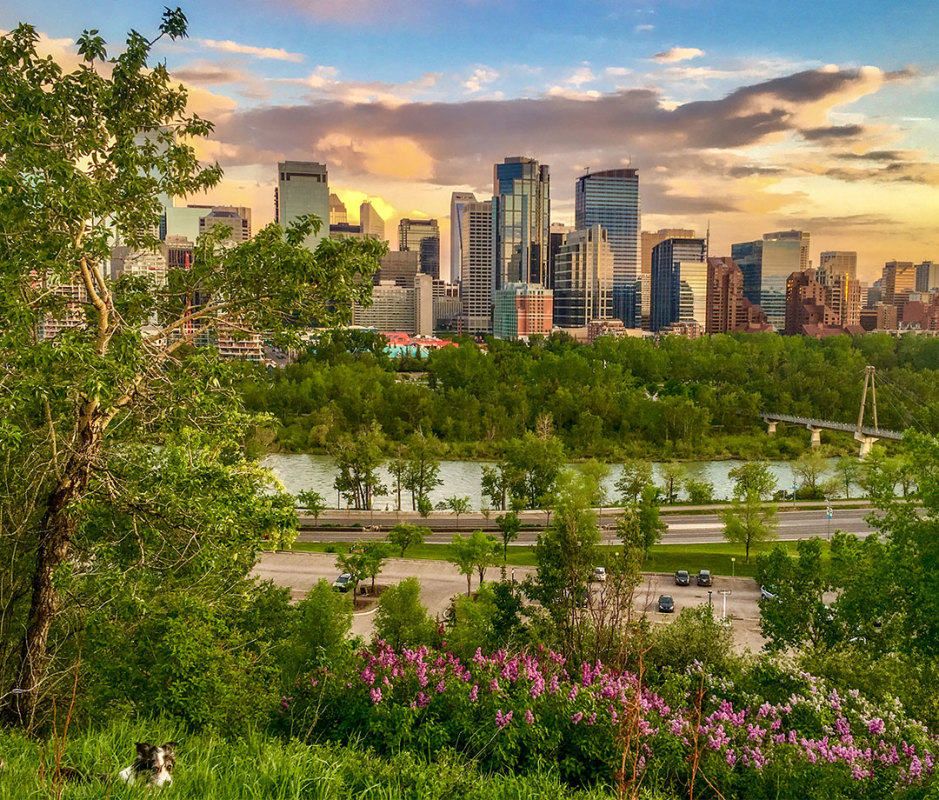
@canada by alexis/Getty Images
The one thing people tend to know about Calgary is its world-famous Stampede—a two-week event every July that brings every rodeo trope together into one citywide event. But there’s plenty more to enjoy in Canada's Western-vibes town at the foot of the spectacular Canadian Rockies—which offers easy access to hallowed mountain getaways like Banff (also in this lineup) and gorgeous drives through vintage southern Alberta ranch country along the 362-mile Cowboy Trail (Highway 22). Over the last decade, Calgary has undergone a cultural revolution in terms of dining, drinking, and entertainment. One out of every 100 jobs in Canada is supported by the beer industry, so do your part to help out at National Beer Garden, where you can drink your way through the deep bench, or bowl a round at the 10th Street location.
If brewskies aren’t your bag, you can get caffeinated instead at Rosso, a roastery known for exceptional quality control. True coffee heads will want to visit the city's flagship Victoria Park location where the coffee is roasted on site. Calgary is also a great city for cyclists (with over 400 miles of biking trails), hikers through the city's numerous parks, and shoppers. Dive into Phoenix Comics for some reading material, discover new household items you didn’t even know you needed at Uncommons, or go bin diving for vinyl at Melodiya Records. If that last point of interest caught your attention, schedule a trip in late June to visit Sled Island, a five-day celebration of independent music, arts, and culture.
Where to Stay: Alt Hotel Calgary East Village
Alt Hotel Calgary East Village is a sleek minimalist hotel, located in one of the city’s coolest neighborhoods. Dine at the in-house restaurant NUPO, and snag a reservation at EIGHT by Chef Darren MacLean, which as the name would imply, only seats eight diners at a time.
Best for French-Canadian Charm: Quebec City
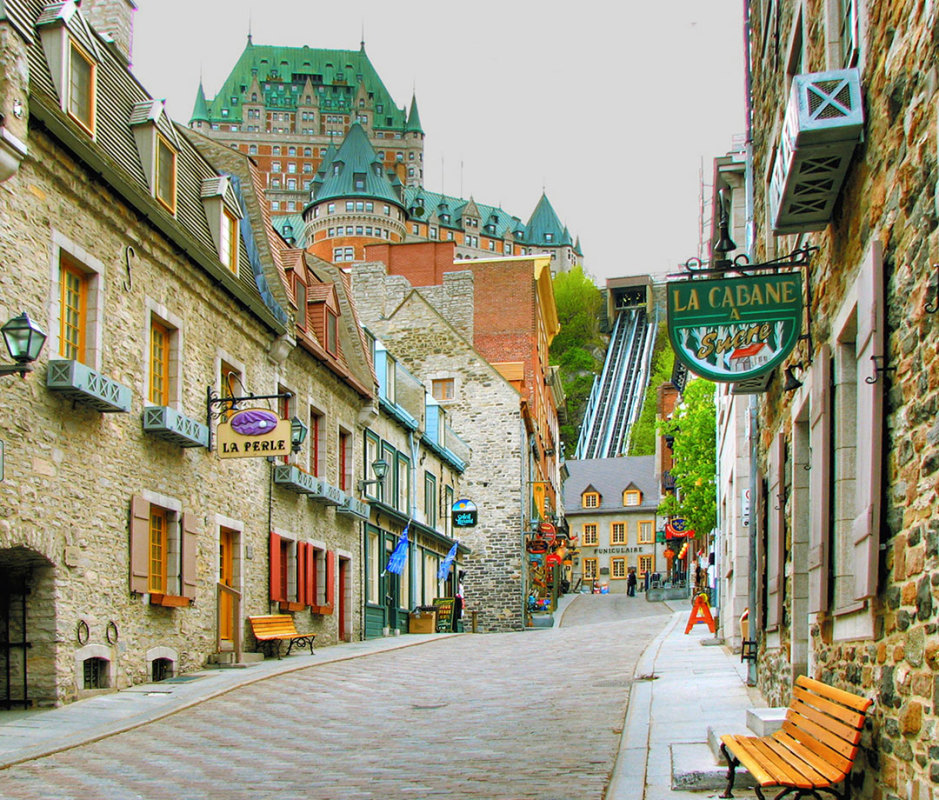
Nino H. Photography/Getty Images
Since French is the predominant language of Quebec, its capital city is often called the Europe of North America—a comparison heightened by its cobblestone-covered old town quarter. But you don’t need to be a Francophile to appreciate Quebec City’s charms. Go on an adventure with Les Promenades Fantômes—a ghost walk known for its fascinating look at the history of the city through a dark and twisty lens. Or meet the (tiny) local English-speaking community at Morrin Centre—maybe the only library you’ll ever visit that did time as a dungeon in centuries past. The multicultural nature of Quebec City makes for an incredible food scene, with standouts like French bistro Le Clocher Penché, Champlain Restaurant, and Franky Johnny—which many credit for kicking off the city’s sandwich revolution.
Yes, it’s bloody cold here in the winter. The perk? From January to mid-March you can book a room at Hôtel de Glace, constructed completely out of ice and snow. Just be sure to book early if you’re heading there mid-February, as the region hosts its famed Carnaval de Quebec, a snow sculpture-heavy tribute to all things winter, which draws a serious, bundled-up crowd. For warmer-weather fans, Montmorency Falls Park features waterfalls higher than Niagara—and many vantage points to enjoy them. Hike across suspension bridges at Canyon Ste-Anne or zipline over the top. For a grand overview of the region, try the summit hike to Sentier des Caps in Charlevoix.
Where to Stay: Le Château Frontenac
Le Château Frontenac has convincingly enough been called the most-photographed hotel in the world. The Fairmont property, located in the historic district's Upper Town by the Saint Lawrence River, looks like a castle on a hill. It also offers a princely number of amenities, including an in-house spa and gym, and food options at 1608 Bar, Place Dufferin, and Champlain Restaurant.
Best for Sheer Alpine Beauty: Banff
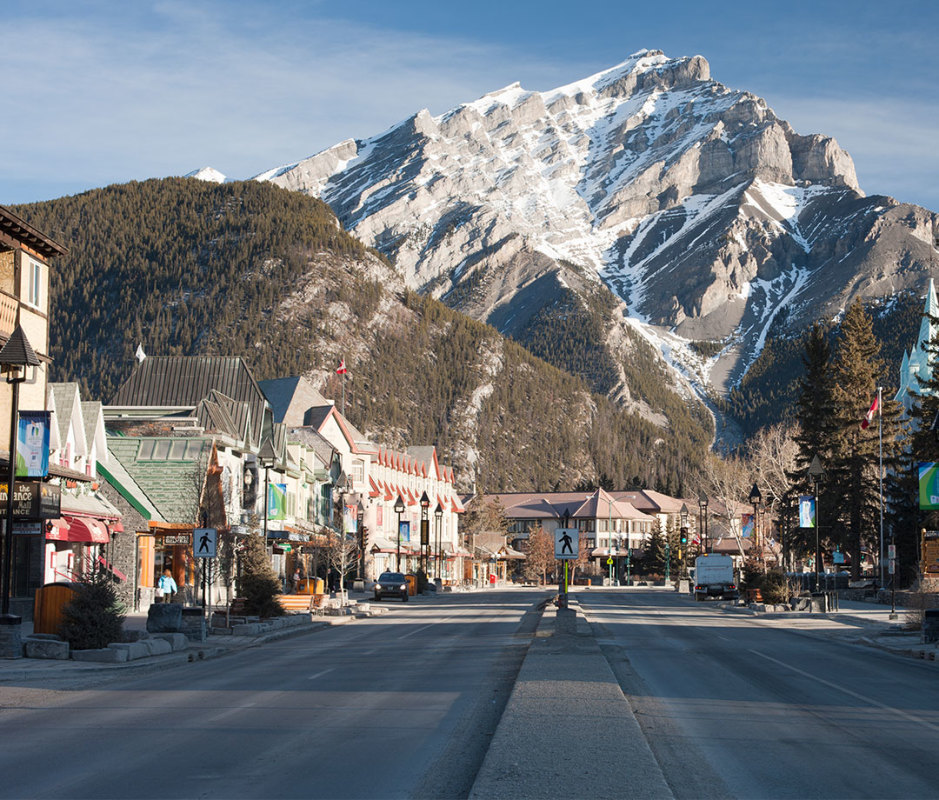
David Clapp/Getty Images
This ultra-quaint Alberta town is the gateway to the Canadian Rocky Mountains—an impressive 6,500 square kilometers of natural playground 80 miles west of Calgary along the Trans-Canada Highway. A stroll down Banff Avenue is nirvana for lovers of handmade soaps, fudge, flannel shirts (at the Rocky Mountain Flannel Company), ice sculptures, and random obscurities like the Banff Merman exhibit—glaring back at unsuspecting visitors from the Banff Trading Post.
Adventurers will aim for Banff National Park proper, the 2,564-square-mile home to some of the most spectacular pockets of Rocky Mountain country anywhere. Just over the provincial border in British Columbia, the rather unreal-looking turquoise waters of Lake Louise and its encircling peaks comprise Canada’s signature postcard vista. Brewster Stables will allow you to take in the scene on horseback. The imposing Columbia Icefield covers 89 square miles on the north side of the park. To see more of Athabasca Glacier, join up with an Ice Explorer tour that will safely usher you further in aboard an all-terrain SHERP vehicle. The Banff Gondola offers the easiest scenic route up Sulphur Mountain in a glass-bottom car, where mountain goats often await your arrival. Close out the day at Banff’s iconic Grizzly House, where guests have been indulging in various fondues since 1967.
Where to Stay: The Rimrock Resort Hotel
Beyond the striking design of its Japanese-inspired properties, The Rimrock Resort Hotel is a city unto itself, featuring three high-end restaurants, a full-service spa, and jaw-dropping panoramas of the surrounding valley.
Best for Urban Explorers: Toronto
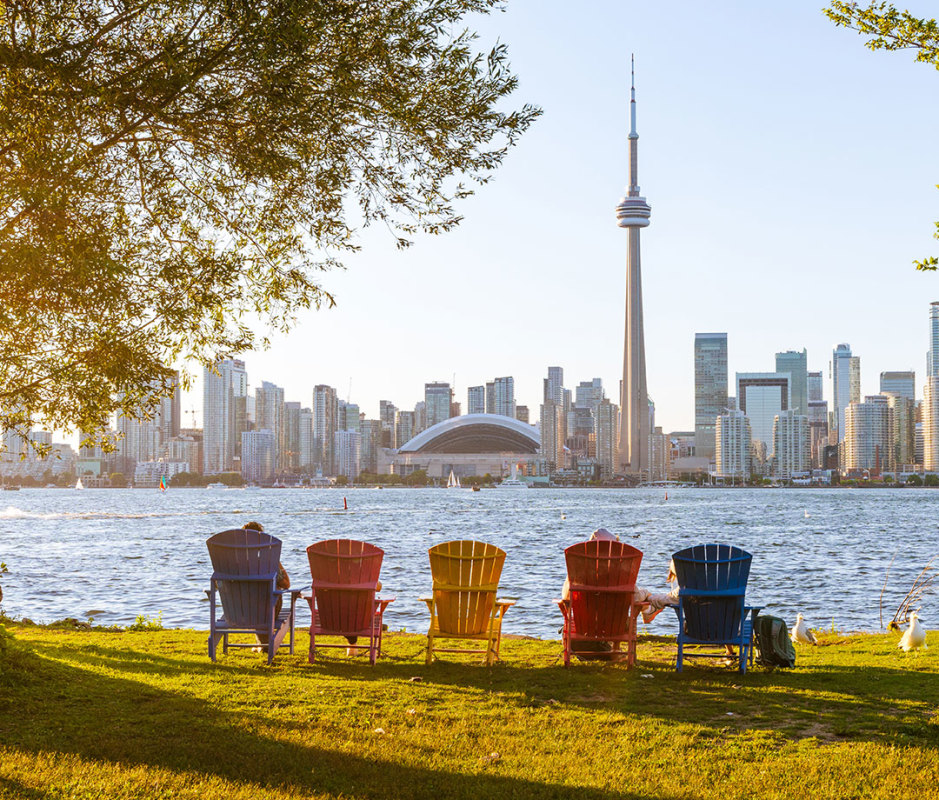
Cheng Feng Chiang/Getty Images
Toronto’s incredible diversity reflects its roots, and lends itself to numerous travel experiences in one of North America’s most multifaceted towns. For a sprawling city of three million people (“Greater Toronto” is double that), it’s also impressively laid-back. Get into the casual spirit with a stroll through the Distillery District, comprised of 30 buildings that make up a Victorian industrial complex—now packed with endless shopping and dining options. Dig deep into Canadian sports pride with a trip to the Hockey Hall of Fame.
When you're hungry, Toronto’s limitless culinary offerings cover whatever the craving may be. Head over to St. Lawrence Market Complex to pick up meal fixings—or let someone else do the cooking for you at local favorites like Burger Drops, The Heartbreak Chef (fried chicken), or Banu (Iranian). In terms of green space, Toronto’s extensive park system covers an impressive 13% of the city. Head to Allan Gardens for the greenhouses, High Park during cherry blossom season, and Toronto Music Garden for front-row views of the iconic CN Tower.
Where to Stay: Gladstone Hotel
Gladstone Hotel prides itself for bringing travelers and the local creative community together under one roof. Swing by to work from the brightly painted communal spaces or take one of the city’s last hand-operated elevators to the guest rooms featuring paintings by Canadian artists.
Best for Scenic Train Travelers: Jasper
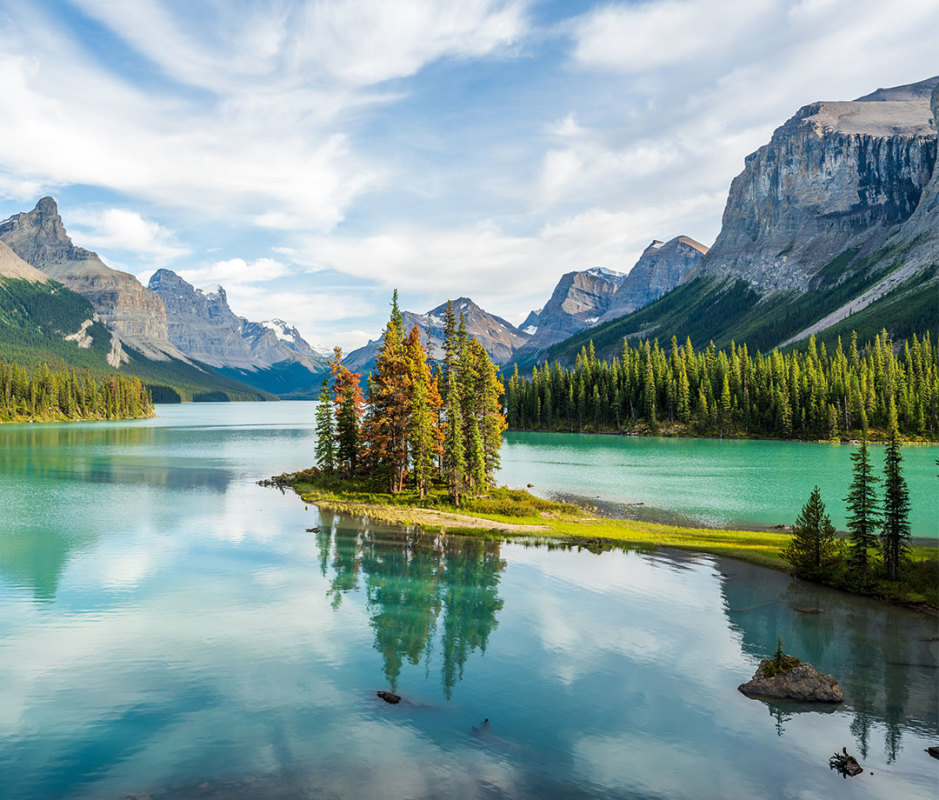
Francesco Riccardo Iacomino/Getty Images
More jaw-dropping Rocky Mountain beauty awaits visitors who commit to remote Jasper, Alberta, tucked away over three hours north of Banff—and receiving a fraction the crowds. The closest international airport (Edmonton International) is 226 miles away, giving the UNESCO heritage site a much-desired touch of seclusion.
To cruise between Kamloops, BC, and Jasper in style, consider travel on the Rocky Mountaineer sightseeing train. Taking a slower form of transportation with floor-to-ceiling windows allows for truly surreal views of the Rocky Mountains, along with the occasional mountain goat, elk, and deer. Free-flowing beverage options aboard the train include many beers, wines, and spirits sourced from within Canada.
Jasper National Park is a true gem and large enough to merit a car rental—and hefty park pass ($75 per adult; $151 per group). Once inside the park, priceless experiences include chasing cascading water at Athabasca Falls, Sunwapta Falls, or Upper Falls; hiking up Mount Edith Cavell or Cavell Meadows to spectacular views; and numerous unique guided tour opportunities. Join up with Jasper Motorcycle Tours, and sit sidecar while a professional does the riding. Take a night photography tour in Jasper’s Dark Sky Preserve to master the art of capturing the starriest sky you'll likely ever witness through a lens.
Where to Stay: Fairmont Jasper Park Lodge
Since Jasper feels like one big summer camp, lean into the vibe with a stay at the Fairmont Jasper Park Lodge. Comprised largely of cabins, the 442-room hotel sits waterside at Lac Beauvert, a body of water offering views so spectacular it might actually make you a morning person. Just be sure to hike the lake area with care, as deer, elk, and bears (black and grizzly) are often seen around these parts.
Best for Bucket Listers: Niagara Falls
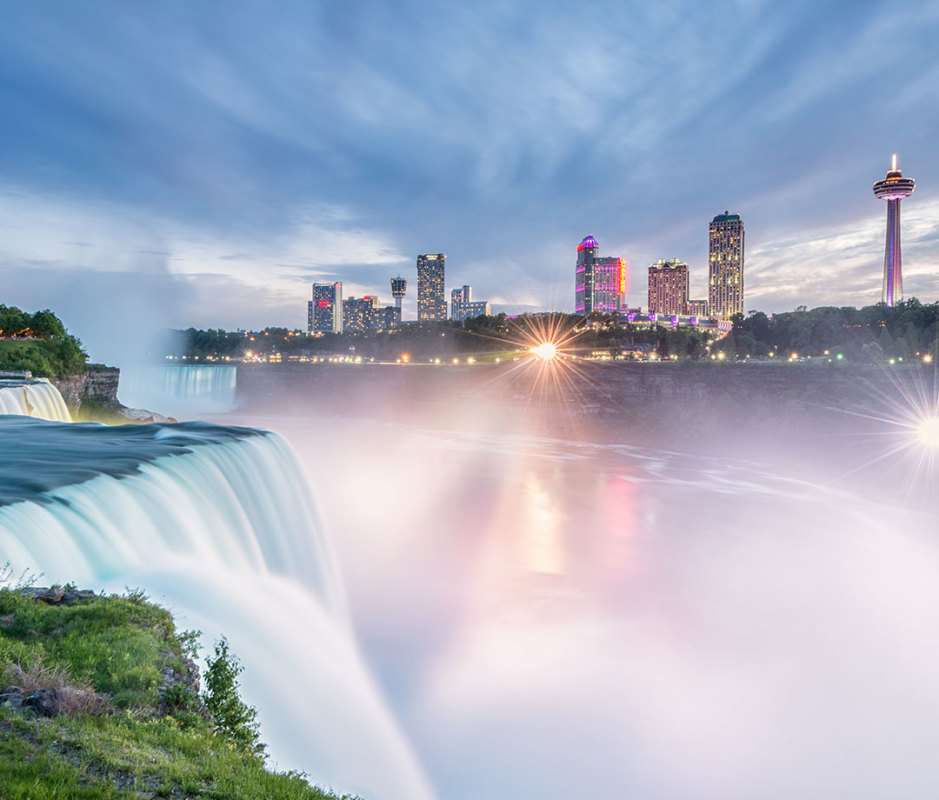
Allard Schager/Getty Images
Sure, you could view the world's most famous falls from the American side, but it’s generally agreed that the real experience is on the Canadian end—with the the sweetest views. Niagara Falls is the perfect blend of nature and kitsch. Case in point: those nightly illuminations, where for 15 minutes at the top of every hour the famous falls are bathed in a different color that rotates depending on seasons and celebrations. It’s also the place to go for your favorite adrenaline-fueled activities, like soaring with Zipline to the Falls at Grand View Marketplace.
While no one is going over the top in a barrel these days (dumb stunts are subject to a fine of up to $25,000), the best legal rides here include careening 3,500 feet across the Niagara Gorge with Whirlpool Aero Car, or choppering overtop with National Helicopters for the ultimate view. Even by Niagara standards, dining at the Rainforest Café is an increasingly rare kitsch treat. For a more refined bite, The Flour Mill Scratch Kitchen is one of the top culinary stops in a town with no shortage of restaurants.
Where to Stay: Sheraton Niagara Falls
While a hotel chain like Sheraton may not naturally excite when booking a luxury adventure trip, Sheraton Niagara Falls will prove an exception—featuring guest rooms with pretty unbeatable floor-to-ceiling views of the town’s main attraction.
When to Visit Canada
Canada is one big country with wildly varying climates, so the short answer about when to visit is: any time, depending on whether your seasonal interests skew toward winter or summer and where exactly you're heading. Avoiding Canada's largest cities—Toronto, Montreal, and Vancouver—during the heart of summer will help you avoid the biggest crowds, while the tradeoff is that some of those city's top annual festivals are happening at that time. Same goes for eastern Canada's Maritime Provinces, which see the peak of tourism in July to August.
Flights to Canada
From the U.S., practically every major hub offers direct flights to most major Canadian cities. Check Air Canada, United, and American Air to get you started. If you’re heading further north or east—think Yellowknife, Quebec City, or Charlottetown—you'll need to take a connecting flight.
Why You Should Trust Me
I write regularly about travel and adventure for Men's Journal—and while my beat covers much of Europe and Asia, too, I especially love our neighbor to the north. From photographing music festivals in Montreal and Calgary to bear spotting in Jasper, and improving my French for a week in Quebec City, I’ve covered a lot of ground across Canada. Because it's such a diverse country, there’s always something new to learn and see, and a reason to trek back across the border.
from Men's Journal https://ift.tt/pyUDvPt
via IFTTT
